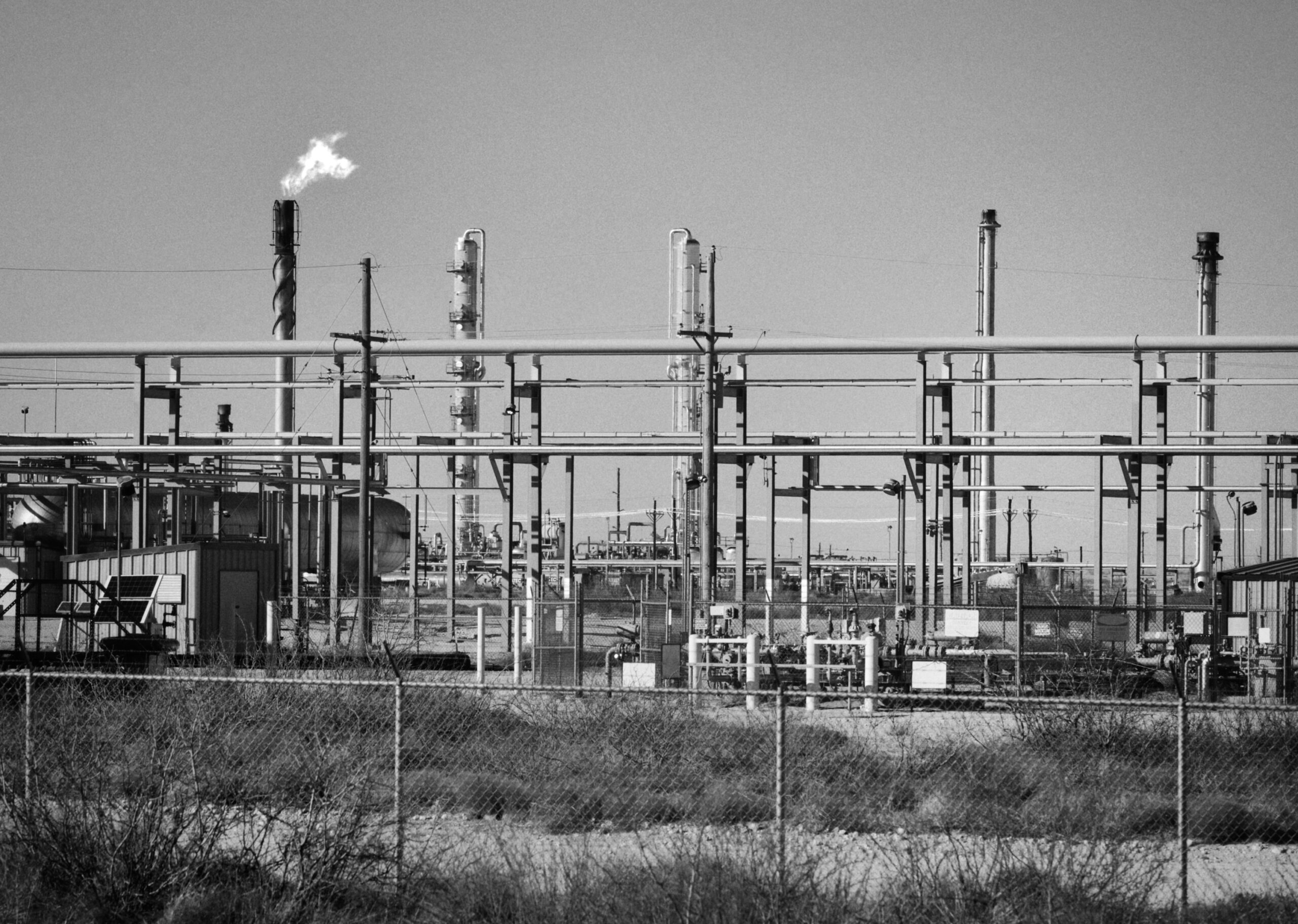New Mexico
Vasquez demands Texas governor remove razor wire along New Mexico border

New Mexico
Houston-area man accused of kidnapping New Mexico baby whose mom, another woman were killed

ABILENE, Texas – A Houston-area man is accused of kidnapping a 10-month-old girl whose mother and another woman were found shot and killed in New Mexico, federal officials say. Authorities say the baby later was found in Texas.
According to the U.S. Attorney’s Office for the District of New Mexico, 26-year-old Alek Isaiah Collins, of Manvel, was charged by criminal complaint with interstate kidnapping of a child.
Alek Collins (Photo: Abilene Police Department)
MORE NEWS: Houston judge’s probation practices scrutinized
Police in New Mexico say two 23-year-old women – Samantha Cisneros and Taryn Allen – were found shot to death at a park near Clovis on May 3. Cisneros’s 5-year-old daughter was also reportedly found on the ground with a head injury and was taken to the hospital.
Police discovered that Cisneros also had a 10-month-old daughter, who was not at the scene. An Amber Alert was issued for the girl.
According to federal officials, evidence indicated the potential involvement of a maroon Honda, and witnesses reported that a maroon or red sedan was at the park at around the time of the incident.
According to the U.S. Attorney’s Office, the investigation revealed that Collins had rented a maroon Honda, and GPS data from the vehicle showed it near that park around the estimated time of the homicide. Collins was also allegedly linked to a phone that was in the area of the park around that time.
MORE NEWS: Suspect charged, second suspect sought in robbery-kidnapping case
Federal officials say the car was found at a home in Abilene, Texas, where the vehicle had been remotely disabled after Collins failed to return it to the owner on time.
Officers were preparing to execute a search warrant at the house when an Uber driver pulled up in an SUV and Collins came out of the home with the girl, the U.S. Attorney’s Office says. Collins allegedly put the girl in the backseat and then forced the Uber driver to get out of the vehicle at gunpoint before Collins drove away with the girl.
MORE NEWS: Mississippi triple-murder suspect shot and killed by Arizona trooper
Abilene police were able to bring the vehicle to a stop, arrest Collins and get the girl out of the car, federal officials say.
Authorities say Collins has no relation to the girl and does not have legal custody of her.
Collins appeared before a federal judge in Abilene on Tuesday morning and will remain in the custody of the U.S. Marshals Service pending transfer to New Mexico.
This story was reported from Houston.
New Mexico
New Mexico loophole may allow record methane releases – NM Political Report

By Jerry Redfern, Capital & Main
In the first two months of the year, the pipeline company Targa Northern Delaware vented more climate-damaging natural gas from its operations in New Mexico than all other oil and gas producers in the state combined — 250% more, an amount equivalent to the carbon footprint of nearly 26,000 gasoline-powered cars driven for a year.
The state’s landmark 2021 Methane Rule banned routine venting and flaring of natural gas. But some 15 exceptions for pipeline operators allow such venting and flaring in certain circumstances, including when gas is so far out of pipeline specifications that it constitutes an “emergency,” which is what the company claimed 10 times in the first two months of the year, each time releasing millions of cubic feet of the potent greenhouse gas.
Those releases were enough to push the state’s January and February venting totals to their highest levels since the state began closely tracking venting and flaring in 2021 as part of the Methane Rule. That rule was put in place as part of New Mexico Gov. Michelle Lujan Grisham’s drive to rein in greenhouse gas emissions across the state, particularly in the oil and gas industry — the state’s biggest emitter. Natural gas is mostly methane, a highly potent greenhouse gas that is 80 times more capable of trapping heat in the atmosphere than carbon dioxide.
The January and February releases represent “the worst-case scenario,” said Jon Goldstein, senior director of regulatory and legislative affairs at the Environmental Defense Fund.
“One of the things that the rules do is state that, whenever possible, you ought to be flaring and not venting,” he said. In emergencies, flaring natural gas — burning it at its production site — is “a necessary evil” and one that has a far lower climate-warming effect than venting unburned gas into the atmosphere.
“Why wasn’t this massive amount of gas routed to a flare?” Goldstein asked. Doing so would have reduced the equivalent carbon dioxide emissions by 90%.
The 10 venting incidents account for nearly all of the gas released by Targa Northern Delaware in those months, including the largest reported single release — more than 65,000,000 cubic feet — since detailed record keeping began in June 2021. The reason given in all 10 cases was, “Gas was vented to atmosphere to purge the pipeline of off-spec residue gas.”
Pipelines have specifications for the composition of and contaminants in natural gas they accept from oil producers, and “Natural gas this out of spec can damage pipelines or pipeline components. This [is] why out of spec gas is one of the permissible emergency categories,” said Sidney Hill, public information officer with the Energy, Minerals and Natural Resources Department. In documents filed with the Oil Conservation Division, Targa Northern Delaware claims that the company repeatedly received impure gas from well operators, but it does not explain why the gas wasn’t then flared. “The OCD is further investigating the situation,” Hill said.
“With the data that it now can collect, EMNRD’s Oil Conservation Division has tools to ensure those claims are correct,” said Michael Coleman, communications director for Gov. Lujan Grisham. “If they prove not to be, we are confident EMNRD will take appropriate action.”
Oil Conservation Division records running from May of 2021, when the Methane Rule went into effect, to today show that Targa Northern Delaware has vented more natural gas in that time than any other company. It is a subsidiary of Targa Resources of Houston, a natural gas pipeline juggernaut that connects wells with major pipelines across New Mexico, Texas, Oklahoma, Louisiana and North Dakota. The company did not respond to requests for comment.
* * *
The biggest single natural gas vent in New Mexico’s recorded history happened in October, 2012, when Transwestern Pipeline Company depressurized an entire pipeline to replace a valve. More than 21 billion cubic feet of natural gas escaped into the atmosphere, equivalent to the emissions of 2.7 million gas-powered cars driven for a year. It is among the biggest single releases — if not the biggest — in U.S. history.
Though diminished over time, Transwestern Pipeline’s methane remains in the sky today, warming the planet and providing a real-time example of how the effects of methane venting — accidental or otherwise — linger for years.
Targa Northern Resources’ January and February emissions were orders of magnitude smaller, but they still warm the planet and will continue to do so for at least 20 years.
“Historically, midstream operators like Targa weren’t even on our regulatory radar because they had no reporting requirements,” Coleman said, because the Methane Rule had yet to be put in place. “It should also be noted that overall levels of venting, flaring and releases have not increased significantly in recent years, despite significant increases in total oil production.”
Not increasing significantly is not the same as decreasing, however. Alex DeGolia, director of state legislative and regulatory affairs with the Environmental Defense Fund, said that New Mexico is not on track to meet the climate goal set out by Gov. Lujan Grisham at the start of her term to reduce the state’s greenhouse gas emissions by 45% below the state’s 2005 level by 2030. The Methane Rule is a key part of that policy, one that the governor regularly trumpets.
“With all existing federal and state policies in place, as of last summer, the state was only on track to reduce emissions by 13%, according to our estimates,” DeGolia said. Since then, the state has passed clean car and truck laws and funded solar power grants. But, “New Mexico needs to actually be making sure that it is implementing its important regulations on methane emissions in particular,” he said, if it hopes to even reach 13%.
The International Energy Agency has said, “Oil and gas methane emissions represent one of the best near-term opportunities for climate action because the pathways for reducing them are well known and cost-effective.” But that’s only if oil and gas companies take those pathways.
“The longer we wait, the harder it will become, until the practicality of achieving the goal diminishes substantially,” DeGolia said. And whatever greenhouse gas reductions are not made by the most lucrative industry in the country, he said, “would need to come from elsewhere.”
That would be the people of New Mexico, the third-most impoverished state in the country according to 2021 data from the U.S. Census Bureau.
* * *
In the end, Targa Northern Delaware’s venting may be legal under the state’s Methane Rule. In fact, it’s “likely,” said Tannis Fox, a senior attorney at the Western Environmental Law Center.
“The rule itself is a good rule,” she said, but “It’s not a panacea. It’s not a ‘no venting ever’ rule.”
Fox was involved in its drafting along with others from the environmental community, the oil and gas industry, public representatives and those in government. And when they were done, she remembers thinking, “‘Well, gosh, there’s a lot of exceptions.’
“It was being touted, really by everybody … as a prohibition against venting and flaring,” she said. “It’s like, ‘Yeah, but…’”
The Oil Conservation Division is not the only state institution looking at Targa Northern Delaware and its emissions.
Industrial facilities that produce and release hazardous chemicals into the environment need a permit from the New Mexico Environment Department (NMED) that lays out exactly how much of those chemicals they can release before triggering a violation.
According to Jorge Armando Estrada, public relations coordinator with NMED, Targa Northern Delaware exceeded its permits 163 times in January and February alone. In total so far this year, Estrada said the company reported exceeding its emissions limits 277 times, representing 39% of all reports filed with the department, which monitors 441 companies.
In addition, he said, “Over a 10-day period, Targa Northern Delaware reports it emitted 91,000 pounds of VOCs [volatile organic chemicals], which is larger than any other single event during this time.”
VOCs are the building blocks of ozone pollution, which contributes to lung diseases and other health threats. In the last week of April, the American Lung Association released its annual State of the Air report card, which grades the air in cities and counties across the country. Targa Northern Delaware has its facilities in Lea and Eddy counties, which received a D and an F, respectively, due to ozone pollution from the oil and gas industry.

The Frac Cat Compressor Station in Lea County, New Mexico, is part of Targa Northern Delaware’s natural gas gathering system that vented record amounts of natural gas in the first two months of this year. Targa Resources bought Lucid in 2022.
On April 29, NMED announced a $24.5 million settlement with oil and gas producer Ameredev II, of Austin Texas. Most of that money will go to the New Mexico general fund. James Kenney, NMED department secretary, said, “I don’t know that the state has ever had a civil penalty in excess of $20-plus million with one oil and gas company.”
He said, “Almost everything that they told us on paper [about their facilities] was significantly underrepresented to what they actually installed in the field.” He continued, “It wasn’t a tiny home, but a very large mansion that they built in the very southeast corner of the state.” And over a year and a half ending in 2020, the company flared billions of cubic feet of natural gas and released 7.6 million pounds of volatile organic compounds beyond their operating permit.
The flaring and releases ended four years ago, and in the time since, NMED wrangled with the company to reach the settlement. That kind of long-term legal fight between state agencies and oil and gas companies is not uncommon, and doesn’t always end in an immediate settlement.
Goldstein, the senior director at the Environmental Defense Fund, noted that NMED and the Oil Conservation Division received funding bumps in the last few legislative sessions, “But they’re still, I think, underwater.”
Whether it’s Gov. Lujan Grisham or the New Mexico Legislature, “I think they all need to be reflective of the role that these agencies play, in terms of protecting the health of New Mexicans,” he said.
It can take years to push new penalties or penalty rates through New Mexico’s Legislature and agency governing boards. However, the Ameredev settlement includes what may be a new method of funding similar enforcement actions. “The Legislature has authorized us to issue permits, and we can charge for those permits,” Kenney said. “When you don’t comply with your permit, we can charge you our staff’s time to come into compliance with that permit.”
And with Ameredev, the New Mexico Environment Department assessed a new $413,000 fee that goes directly to NMED. Going forward, “We’re effectively charging staff time to return people to compliance,” Kenney said.
Copyright 2024 Capital & Main.
Photos by Jerry Redfern.
New Mexico
4 lakes worth visiting in New Mexico this summer
-

 Politics1 week ago
Politics1 week agoHouse Dems seeking re-election seemingly reverse course, call on Biden to 'bring order to the southern border'
-

 World1 week ago
World1 week agoStand-in Jose Raul Mulino wins Panama presidential race
-

 News1 week ago
News1 week agoCompass Direct LLC’s 2024 Registration in North Carolina
-

 World1 week ago
World1 week agoTech compliance reports, Newsletter
-

 News1 week ago
News1 week agoColumbia University cancels its main commencement ceremony after weeks of turmoil
-

 News1 week ago
News1 week agoMan, 75, confesses to killing wife in hospital because he couldn’t afford her care, court documents say
-
News1 week ago
UCLA to resume in-person classes after Gaza protest crackdown
-

 World1 week ago
World1 week agoPentagon chief confirms US pause on weapons shipment to Israel























